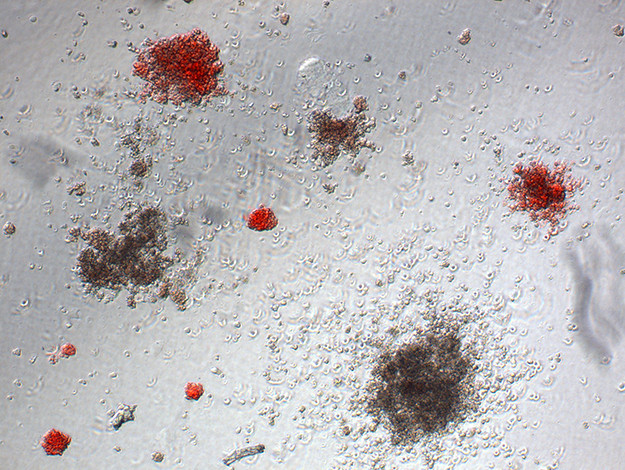
Scientists at McMaster University have discovered that human stem cells made from adult donor cells “remember” where they came from and that’s what they prefer to become again.
This means the type of cell obtained from an individual patient to make pluripotent stem cells, determines what can be best done with them. For example, to repair the lung of a patient with lung disease, it is best to start off with a lung cell to make the therapeutic stem cells to treat the disease, or a breast cell for the regeneration of tissue for breast cancer patients.
Pluripotency is the ability stem cells have to turn into any one of the 226 cell types that make up the human body.The work challenges the previously accepted thought that any pluripotent human stem cell could be used to similarly to generate the same amount of mature tissue cells.
This finding, published today in the science journal Nature Communications, will be used to further drug development at McMaster, and potentially improve transplants using human stem cell sources.
The study was led by Mick Bhatia, director of the McMaster Stem Cell and Cancer Research Institute. He holds the Canada Research Chair in Human Stem Cell Biology and he is a professor in the Department of Biochemistry and Biomedical Sciences of the Michael G. DeGroote School of Medicine.
“It’s like the stem cell we make wants to become a doctor like its grandpa or an artist like its great-grandma,” said Bhatia.
“We’ve shown that human induced pluripotent stem cells, called iPSCs, have a memory that is engraved at the molecular/genetic level of the cell type used to make them, which increases their ability to differentiate to the parent tissue type after being put in various stem cell states.
“So, not all human iPSCs are made equal,” Bhatia added. “Moving forward, this means that iPSC generation from a specific tissue requiring regeneration is a better approach for future cellular therapies. Besides being faster and more cost-efficient in the development of stem cell therapy treatments, this provides a new opportunity for use of iPSCs in disease modeling and personalized drug discovery that was not appreciated before.”
Small quantities of tissue would need to be harvested from the patient; for example, a few millilitres of blood or a small skin punch biopsy. From there, the harvested cells can be put into various stem cell states where they make copies of themselves indefinitely. The trickier part has been to get them out of copy function model and into differentiation mode to produce the cells needed for researchers to test drug therapies with no harm to patients, said Bhatia.
The McMaster Stem Cell and Cancer Research Institute is the only Canadian university team continuing to work exclusively with the more fragile human stem cells rather than mouse stem cells for its research, and that has furthered the work to future clinical impact. By contrast, the iPSCs of mice, which are widely used in stem cell research, have no memory, the authors note.
“So, if you only studied the mouse alone, you’d never uncover this opportunity,” said Bhatia.
In a previous discovery, Bhatia and his team discovered how to make human blood from adult human skin. This meant that patients needing blood would be able to have blood created from a patch of their own skin to provide transfusions.
With these new findings, “our starting block has changed,” said Bhatia, adding that now researchers “can make better tailored human stem cells for therapies because we’ve got a more efficient way of making higher quality and quantity of cells. For example, our team has shown that the stem cells that come from blood in the first place make blood 10 times better.”
Story Source:
The above story is based on materials provided by McMaster University. The original article was written by Amanda Boundris. Note: Materials may be edited for content and length.
Journal Reference:
- Jong-Hee Lee, Jung Bok Lee, Zoya Shapovalova, Aline Fiebig-Comyn, Ryan R. Mitchell, Sarah Laronde, Eva Szabo, Yannick D. Benoit, Mickie Bhatia. Somatic transcriptome priming gates lineage-specific differentiation potential of human-induced pluripotent stem cell states. Nature Communications, 2014; 5: 5605 DOI: 10.1038/ncomms6605
